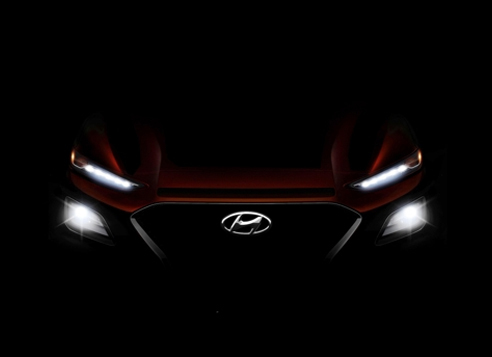Hyundai unveils more details of Kona crossover ahead of launch this summer
By a2016032Published : April 28, 2017 - 12:12
Hyundai Motor Co., South Korea's biggest carmaker by sales, on Friday unveiled more details of its all-new Kona crossover set to be launched in the domestic market this summer.
In its second teaser image, the carmaker has given customers a peep into the exterior designs of the new sport utility vehicle.

The front part of the Kona SUV features an evolved family look with a wider front hexagonal grille (also known as a cascading grille) and the light-emitting diode headlights which are divided into two parts.
On April 3, Hyundai released the first teaser image of the new SUV to grab attention from potential buyers.
Local reports said the launch date is expected to be as early as June and the model will be equipped with a 1.6-liter engine mainly targeted at European markets, where customers prefer small-size vehicles with good fuel efficiency.
The carmaker has yet to provide details on whether the crossover will come with a diesel or gasoline engine.
The Kona SUV is named after a resort town in the northwestern part of Hawaii's Big Island and is part of Hyundai's global marketing strategy to attract more buyers, a company official said.
Hyundai uses the names of famous towns for its SUV models, such as Tucson, Veracruz and Santa Fe.
Hyundai currently does not have an SUV model in the small car B-segment as defined by the European Commission. These are larger than A-segment, or city cars, but smaller than those in the C-segment, which are medium-size vehicles.
South Korea's small SUV market reached 107,000 units last year, jumping from 12,000 units in 2013. The market of SUVs mated with 1.6-liter engines or smaller is expected to grow to 120,000 units in 2022, he said.
The planned release comes as Hyundai's overall sales fell 2.1 percent to 4.86 million units last year from 4.96 million in 2015. (Yonhap)




![[Herald Interview] 'Amid aging population, Korea to invite more young professionals from overseas'](http://res.heraldm.com/phpwas/restmb_idxmake.php?idx=644&simg=/content/image/2024/04/24/20240424050844_0.jpg&u=20240424200058)











![[KH Explains] Korean shipbuilding stocks rally: Real growth or bubble?](http://res.heraldm.com/phpwas/restmb_idxmake.php?idx=652&simg=/content/image/2024/04/25/20240425050656_0.jpg&u=)

